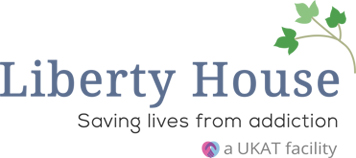
The Wolf of Wall Street, a film notorious for its unflinching depiction of drug abuse and addiction, features one scene that has become cinematic lore. It features the film’s protagonist, Jordan Belfort, played by Leonardo DiCaprio, succumbing to the effects of a legendary drug that he has obtained after years of fruitless searching. The drug is a Quaalude, and its effects on Belfort are both comic and harrowing as we watch him lose all motor control, intentionally roll down a set of concrete stairs and smash his Lamborghini to pieces on his wild drive home. For many younger viewers, this was the first introduction to Quaaludes, a drug that, despite its prevalence in the disco-fueled nights of decades past, had faded into the annals of pharmaceutical history.
This blog will unravel Quaalude’s complex legacy, from its medical origins to its cultural demise. It will offer a window into a turbulent chapter of drug history that may have been forgotten but can still provide key insights for drug enforcement, treatment and societal perception.
Click the image to watch the infamous Quaalude scene from the Wolf of Wall Street
Discovery and medical adoption
Methaqualone, the chemical name for Quaalude, was first synthesised in India in the 1950s as an antimalarial drug. However, the William H. Rorer pharmaceutical company saw the drug’s potential to be marketed as a safer sedative and muscle relaxant to American consumers. Released in the mid-1960s under the brand name Quaalude, it was recommended for patients with conditions like insomnia and anxiety.
The early reception of Quaaludes was largely positive. Doctors were impressed by its effectiveness, while patients often reported a preferable experience to other sedatives. With this success, new markets in the UK and Germany, among others, soon emerged. Methaqualone soon gained a reputation as a wonder drug, effective but with fewer side effects and seemingly less potential for addiction than its contemporaries. However, this optimism would be short-lived as the darker side of methaqualone abuse began to overshadow its medical benefits. It was the beginning of a journey that would take Quaaludes from the shelves of pharmacies to the pages of drug enforcement legislation.
The height of Quaalude popularity
During the ’60s and ’70s, Quaaludes transcended their medical use and became an iconic symbol of the party culture. They were not just prescribed medications but recreational vehicles that fueled disco nights and rock ‘n’ roll lifestyles. Quaaludes soon became known as “Disco Biscuits”, providing users with a tranquil high, reducing inhibitions and enhancing sensory experiences. The drug even found fame by David Bowie and Frank Zappa who sang about Quaaludes in their songs.
This climb to iconic status was no accident; a society chasing liberation and new forms of pleasure propelled it. The era’s experimentation with drugs as a means of breaking free from societal norms made Quaaludes a perfect fit for the counterculture movement. The rise of sexual liberation also played a part in the popularity of Quaaludes, often used to facilitate sexual encounters, earning the nickname “love pills.”
Despite their growing association with recreational use, Quaaludes maintained a veneer of legitimacy, as they were still legally prescribed. This legal status gave users a sense of security, further inflating their popularity at a time when drug use was under enormous legal scrutiny on both sides of the Atlantic.
An emerging pattern of abuse and addiction
It wasn’t long, however, before the dark side of Quaaludes became evident, and the public began to worry about the patterns of abuse and addiction and the drug’s deadly effects. Quaaludes are powerful central nervous system depressants, and there is a fine line between euphoria and overdose, particularly when mixed with alcohol. As Justin Gass, author of the book Quaaludes (Drugs: The Straight Facts), explains:
“People would lie down to go to sleep and just not wake up. That was quite common.”
As well as the alarming addiction rates and incidents of overdose, there were also high-profile accidents, including one in the UK where a man on Mandrax (the UK brand name for methaqualone) drove a car into a bus in 1973, killing two people and injuring four others. Cases of the drug being used for date rape were also alarming to authorities, and Bill Cosby would admit to drugging victims with Quaaludes during his trial decades later.
Rorer eventually sold the Quaalude manufacturing rights to the Lemmon Company in 1978. The Rorer Chairman, John Eckman, explained that the illegal sale and manufacturing of Quaaludes, along with the resulting abuse and addiction, caused major reputational damage for both the drug and the company:
“Quaalude accounted for less than 2% of our sales, but created 98% of our headaches.”
The tide had turned and Quaaludes quickly went from being known as a safe and effective sedative to a terrifying scourge on society. Once that shift came about, the end was already in sight.
Legal ramifications and control measures
In the face of the growing evidence of widespread misuse and addiction, regulatory bodies were forced to reassess the legal status of methaqualone. In the UK, the Misuse of Drugs Act 1971 categorised Mandrax as a Class B drug, making production and sale completely illegal.
Meanwhile, in the US, the Drug Enforcement Administration (DEA) placed methaqualone on Schedule II in 1973 and then Schedule I in 1984. This meant that the drug had a high potential for abuse, no currently accepted medical use in treatment in the United States and a lack of accepted safety for use under medical supervision.
To prevent the influx of black market methaqualone from entering the US, Gene Haislip, who was number three at the DEA at the time, was tasked with travelling around the world to stop the drug at its source. He went directly to the manufacturers in China, Hungary, West Germany and Austria and convinced them to cease operations. He would later explain how this prevented the supply of methaqualone to Columbia, where the vast majority of illegal Quaaludes were made:
“Well, it took some time, but in the end, the Colombians could no longer get their drug powder. They didn’t know what to do. They gave it up. We eliminated the problem. We beat them.”
The downfall of a drug
The legislative changes had their intended effect. Physicians who were once liberal in prescribing Quaaludes became subject to intense scrutiny and potential legal repercussions for any non-compliant prescribing practices. Pharmacies faced stringent inventory controls and reporting requirements, and any diversion of the drug to the black market was met with harsh penalties.
As legal prescriptions for Quaaludes plummeted, so too did their legal manufacture. Without the cloak of legitimacy provided by a medical guise, illicit use of Quaaludes became riskier and less appealing, particularly as supplies dried up and awareness of the drug’s addictive potential became more widespread.
By the late 1980s, the once-roaring Quaalude fire had been completely extinguished. As newer drugs entered the scene, dominating public discourse and concern, Quaaludes became a historical footnote – an echo of a past era of drug culture that many people only recognise from period films or the stories of older generations. Now, all that is left is a legacy of what can happen when abuse potential is underestimated in the face of widespread accessibility.
Final thoughts
Despite fading from active circulation, the lessons of Quaaludes endure, especially in the realm of regulatory and cultural approaches to drug abuse. The Quaalude saga exemplifies the potential for a drug to shift from a medical miracle to a public menace, highlighting the fine line between legitimate use and dangerous abuse.
Contemporary drug culture, particularly the ongoing opioid epidemic, shows parallels with the Quaalude crisis. These similarities are particularly in terms of initial medical acceptance of drugs like OxyContin, which were followed by widespread abuse and eventual regulatory crackdown.
The story of Quaaludes serves as a cautionary tale, reminding policymakers, healthcare professionals and the public of the vigilance required in drug approval and monitoring processes.
If you are struggling with drug addiction, contact UKAT today. We provide comprehensive detox and rehab services and can guide you on the journey to recovery.
(Click here to see works cited)
-
- The Drug Enforcement Administration. “The Drug Enforcement Administration.” DEA.gov, 2021, https://www.dea.gov/sites/default/files/2021-04/1970-1975_p_30-39_0.pdf. Accessed 8 November 2023.
- Low, Harry, and Tom Heyden. “The rise and fall of Quaaludes.” BBC, 9 July 2015, https://www.bbc.co.uk/news/magazine-33428487. Accessed 8 November 2023.
- PBS. “The Quaalude Lesson | The Meth Epidemic | FRONTLINE.” PBS, 14 February 2006, https://www.pbs.org/wgbh/pages/frontline/meth/faqs/quaaludes.html. Accessed 8 November 2023.




